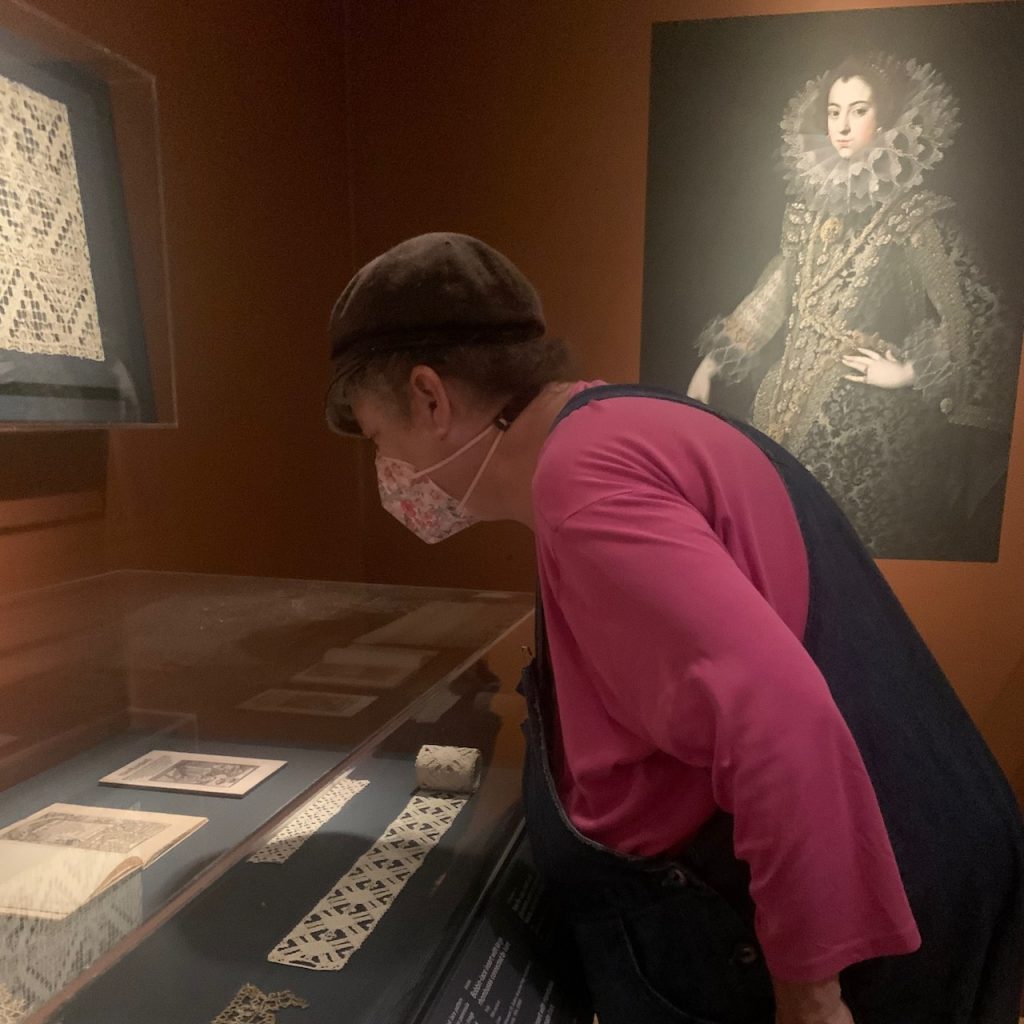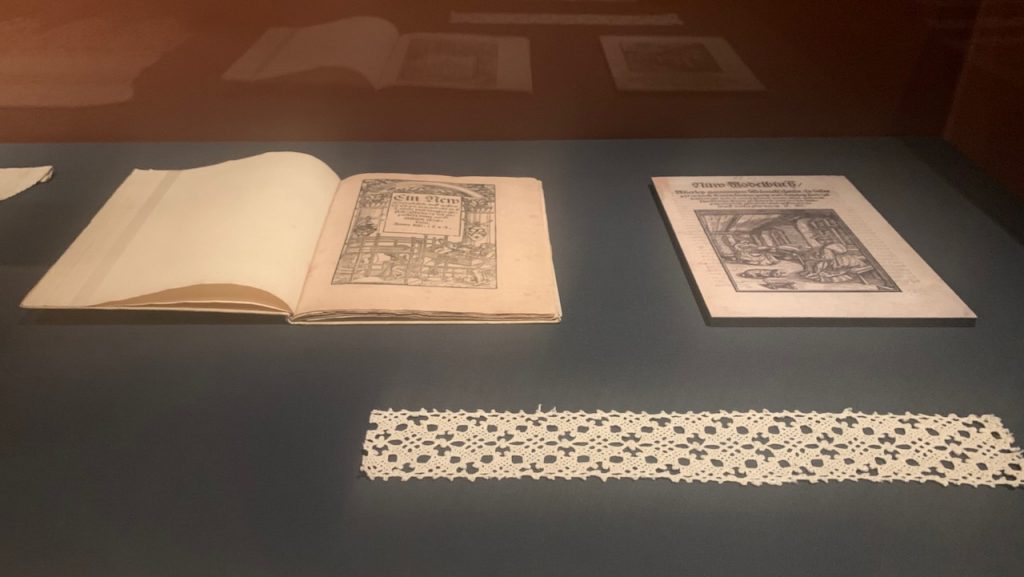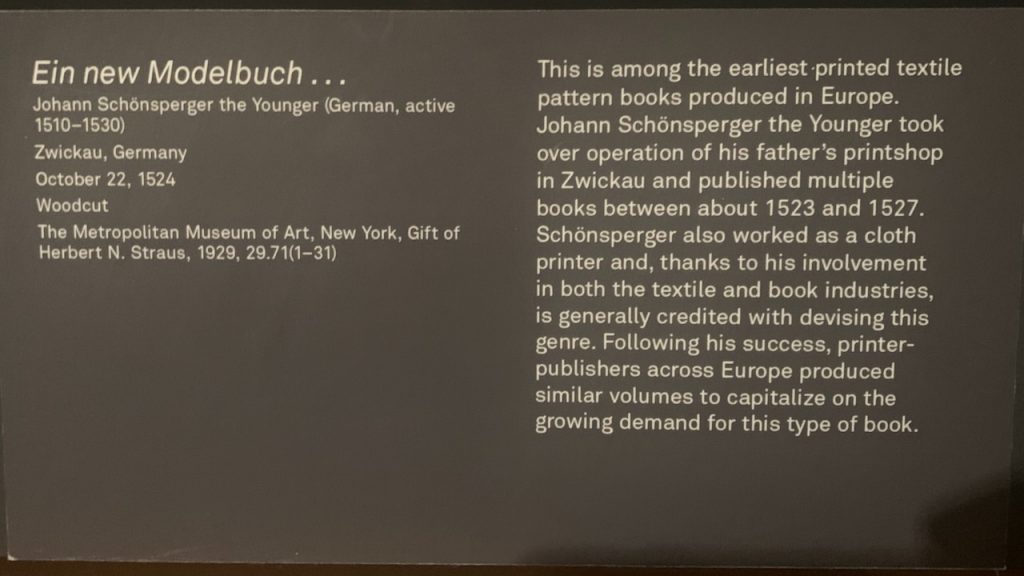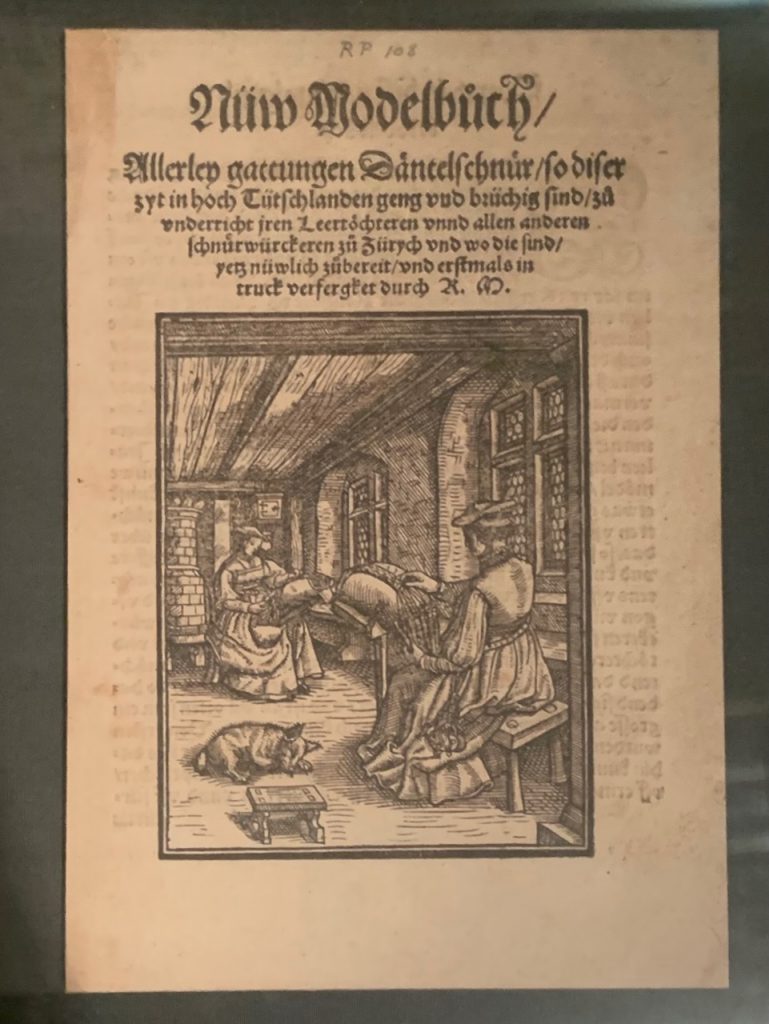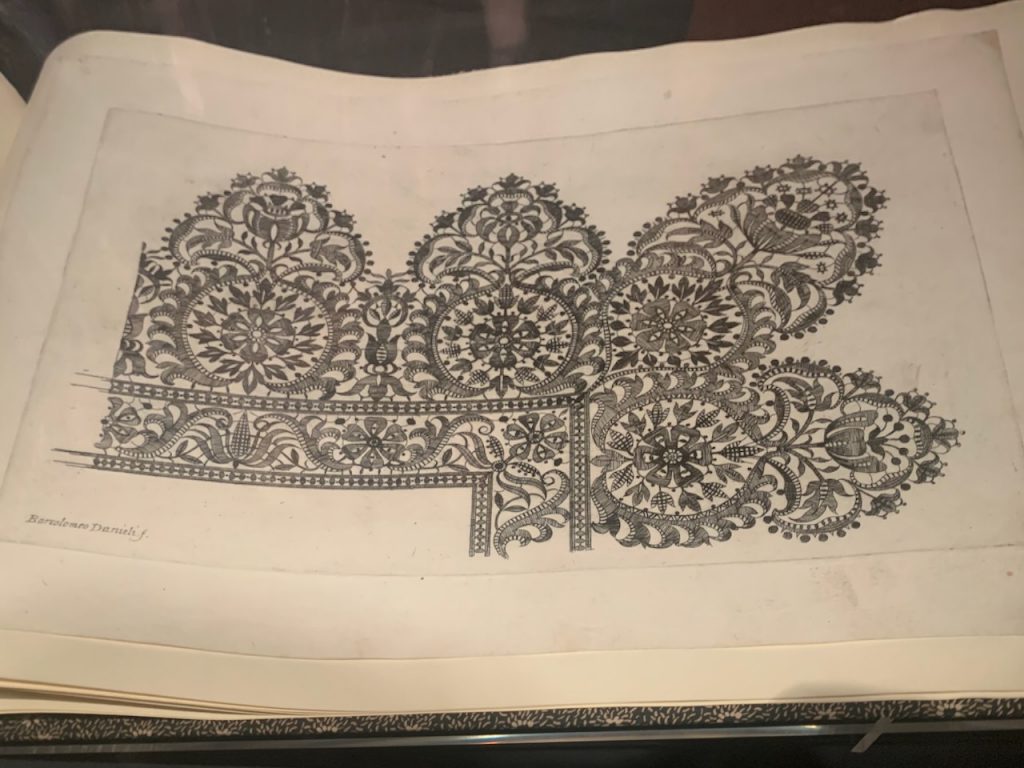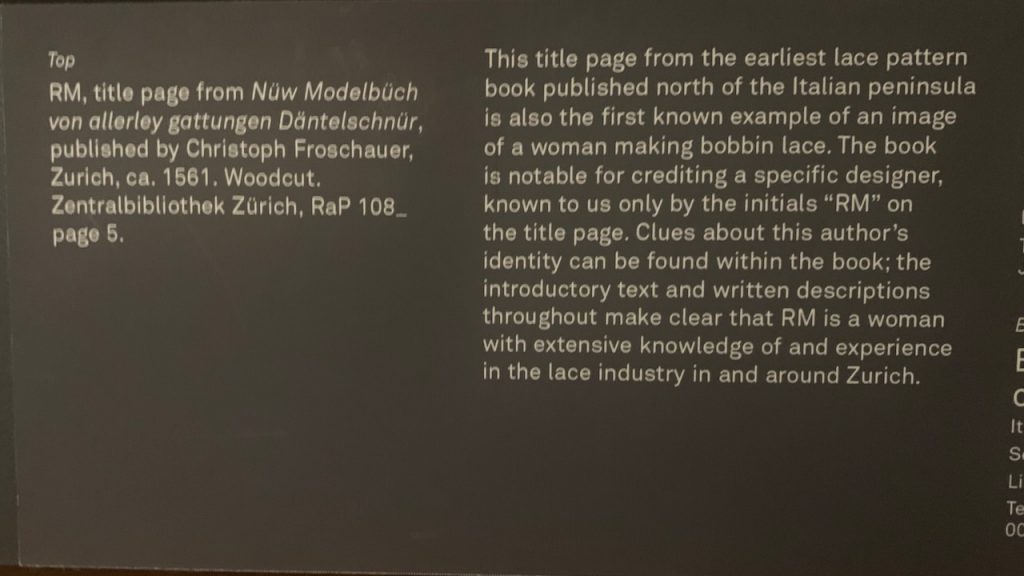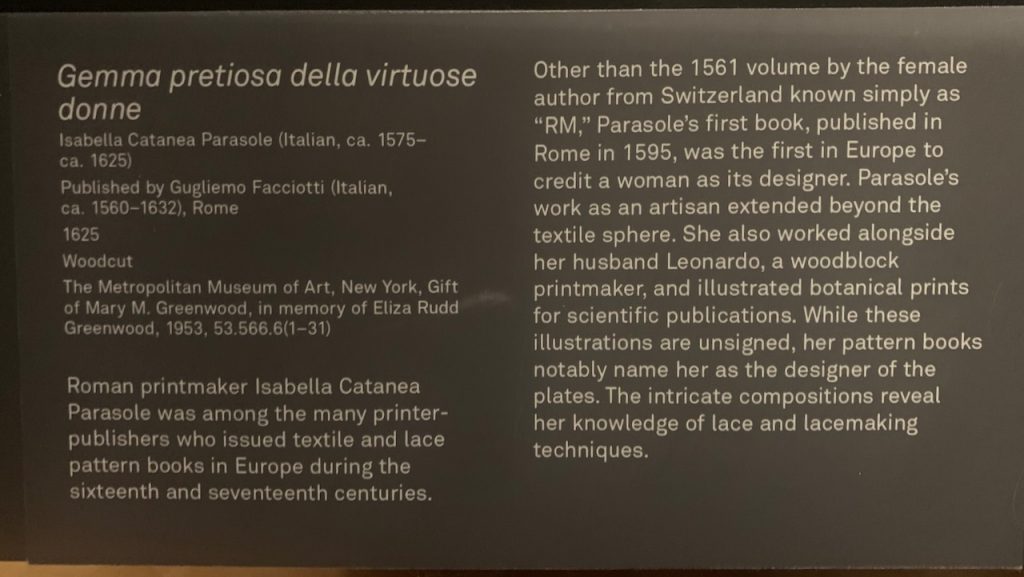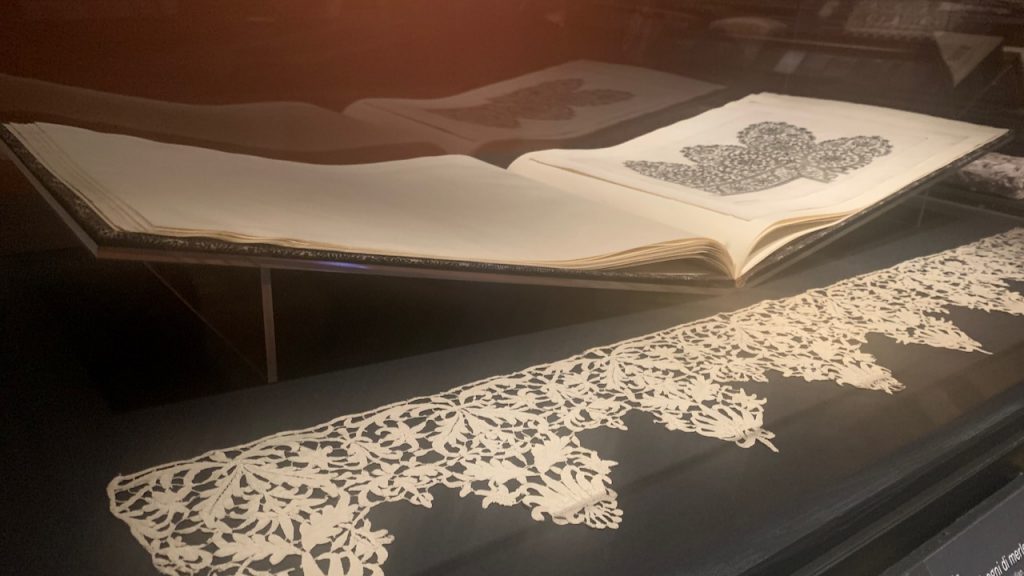Piglet and I ventured out today to see the “Threads of Power” exhibit at the Bard Graduate Center Gallery, exploring the development and social significance of lace, including examples of needle and bobbin lace from the sixteenth and early seventeenth century, courtesy of Switzerland’s Textilmuseum St. Gallen.
Although the fabric examples were impressive, the thing that particularly caught my attention were a few fifteenth- and sixteenth-century examples of “pattern books” — printed collections of designs to be used as source material by people working with fiber and fabric.
Those early pattern books are notable not because they’re entirely original creative works — indeed, they’re just collecting and organizing motifs that have mostly been developed by others — instead, their value lies in the crucial role they play in propagating those ideas to a wider audience beyond the narrow limits of guilds or court society, making it easy for a wide range of people to learn existing patterns, practice their skills, create items that others will appreciate, and eventually branch out to create new unique designs while drawing on this shared heritage.
These early works provide a historical reference point for the work I do in my own life to make heraldic art and small-scale weaving patterns available to facilitate the work of today’s artisans.
It was inspiring to see examples of this type of resource dating from four hundred and five hundred years ago, and I’m very pleased that I am, in my own very small way, helping to continue this tradition.
